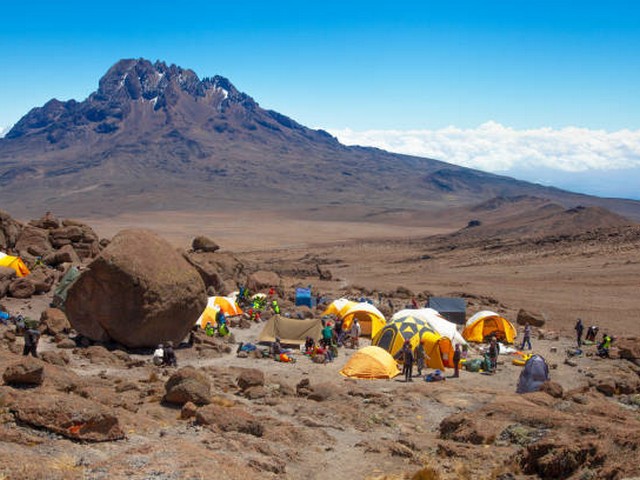Best Trekking Poles and Hiking Boots for Kilimanjaro: Your Ultimate Guide
Welcome to the majestic world of Mount Kilimanjaro, where every step you take is a step toward achieving your dreams! Here at Kilimanjaro Centre for Trekking and Ecotourism (KCTE), we’re not just passionate about the mountains; we are devoted to making your trek as seamless and inspiring as possible. Today, let’s talk about two essential pieces of gear that can make or break your Kilimanjaro adventure: trekking poles and hiking boots.
Embarking on a journey up Mount Kilimanjaro is no small feat. It’s a challenge that demands not only physical strength and endurance but also the right equipment. In this post, we’ll guide you through choosing the best trekking poles and hiking boots, tailored for the unique terrains and climates of Africa’s highest peak.
Why the Right Gear Matters on Kilimanjaro
Climbing Kilimanjaro is a commitment to face the elements, from rocky paths and dusty trails to muddy slopes and potentially snowy summits. The right gear serves not just as your first line of defense against these challenges but also enhances your comfort, safety, and overall experience.
Best Trekking Poles for Kilimanjaro
1. Adjustable Poles:
Adjustability is crucial in trekking poles, as the terrain on Kilimanjaro varies greatly. Poles that can extend and retract will provide support and stability whether you’re ascending steep ridges or navigating descents.
2. Shock Absorption:
Poles with shock-absorbing features reduce the impact on your joints, something you’ll appreciate more with every step at high altitudes.
3. Material:
Aluminum poles are durable and a bit heavier, ideal for those who need extra support. Carbon fiber poles are lighter and easier to carry, perfect for the more experienced trekker looking to keep their pack weight down.
4. Grip and Straps:
Ergonomic grips and adjustable straps enhance comfort and ensure that the poles are an extension of your body, essential for maintaining balance and reducing strain on your wrists.
Best Hiking Boots for Kilimanjaro
1. Fit and Comfort:
The fit is paramount when selecting hiking boots. Too tight, and you risk blisters; too loose, and you lose support. Always try on boots with the socks you plan to wear on the climb, and ensure there’s a thumb’s width of space in the front to accommodate foot swelling at high altitudes.
2. Material and Build:
Look for waterproof, breathable materials to keep your feet dry and comfortable. Full-grain leather offers durability and better water resistance, while newer synthetic materials provide lightness and faster drying times.
3. Ankle Support:
High-cut boots are recommended for Kilimanjaro’s uneven terrains to protect and support your ankles against twists and sprains.
4. Sole and Traction:
Vibram soles or similar are ideal for their superior grip and durability. The sole should also have a protective toe cap and offer ample cushioning to absorb the rugged trails.
How to Test Your Gear Before the Climb
Testing your trekking poles and boots before your Kilimanjaro climb is as crucial as choosing them. Here’s what you can do:
- Take Several Hikes: Use your gear in different terrains and weather conditions. This helps in understanding how they perform and allows your boots to mold to your feet.
- Adjust and Customize: Learn how to adjust your trekking poles quickly and customize the fit of your boots, possibly with insoles or different lacing techniques.
When to Replace or Upgrade Your Trekking Gear
Keep an eye on wear and tear. Boots should be replaced if the soles are worn out or if they no longer provide the support you need. Poles might last longer, but inspect them for any signs of stress or weakness, especially in the locking mechanisms.
Climbing Kilimanjaro with KCTE
Embarking on your Kilimanjaro journey with Kilimanjaro Centre for Trekking and Ecotourism (KCTE) not only ensures that you have seasoned experts guiding you every step of the way but also guarantees an unforgettable, impactful experience. We encourage you to gear up appropriately and join us as we tackle the mighty Kilimanjaro together!
FAQs: Gear Up for Success
Q: How many pairs of boots should I bring for my Kilimanjaro climb?
A: One well-tested pair of hiking boots is sufficient, but consider bringing a lighter pair of shoes for evenings at camp.
Q: Can I rent trekking poles and boots from KCTE?
A: Yes, KCTE offers rental options for high-quality trekking poles and boots. However, for the best fit and comfort, we recommend bringing your own boots that are well broken-in.
Q: What should I look for in a trekking pole if I have knee issues?
A: Opt for poles with excellent shock absorption and adjustability to ease the strain on your knees during descents.
Q: Are heavier boots better for Kilimanjaro?
A: Not necessarily. The best boots are those that offer a balance between weight, support, and durability tailored to your own needs and the conditions you expect to face.
Join Us at KCTE for an Unforgettable Climb!
Ready to conquer Kilimanjaro? Don’t go alone! Join us at Kilimanjaro Centre for Trekking and Ecotourism (KCTE), where adventure meets expertise, and every trekker’s dream is within reach. Book your climb today and step into the beauty and challenge of Kilimanjaro with confidence. Visit our website or contact us to start your journey to the roof of Africa, well-equipped and inspired. Let’s make your Kilimanjaro adventure a story worth telling for generations!




